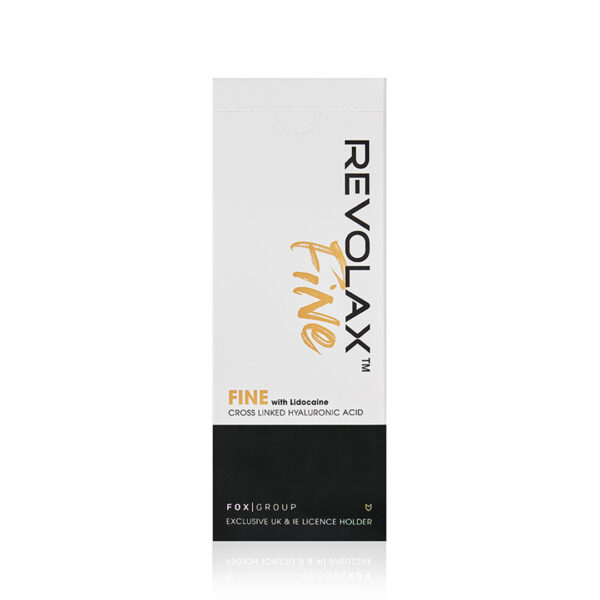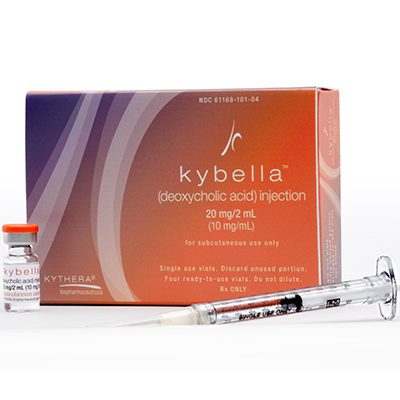Fast delivery within 72 Hours
Kybella (Deoxycholic Acid) 20mg/2ml 1 0mg/ml
€55
Black Friday Blowout!
Description
APPROVED USE AND IMPORTANT SAFETY INFORMATION
What is KYBELLA®?
KYBELLA® is a prescription medicine used in adults to improve the appearance and profile of moderate to severe fat below the chin (submental fat), also called “double chin.”
It is not known if KYBELLA® is safe and effective for the treatment of fat outside of the submental area or in children under 18 years of age.
Who should not receive KYBELLA®?
Do not receive KYBELLA® if you have an infection in the treatment area.
APPROVED USE AND IMPORTANT SAFETY INFORMATION
What is KYBELLA®?
KYBELLA® is a prescription medicine used in adults to improve the appearance and profile of moderate to severe fat below the chin (submental fat), also called “double chin.”
It is not known if KYBELLA® is safe and effective for the treatment of fat outside of the submental area or in children under 18 years of age.
Who should not receive KYBELLA®?
Do not receive KYBELLA® if you have an infection in the treatment area.
Before receiving KYBELLA®, tell your healthcare provider about all of your medical conditions, including if you have had or plan to have surgery on your face, neck, or chin; have had cosmetic treatments on your face, neck, or chin; have had or have medical conditions in or near the neck area; have had or have trouble swallowing; have bleeding problems; are pregnant or plan to become pregnant (it is not known if KYBELLA® will harm your unborn baby); are breastfeeding or plan to breastfeed (it is not known if KYBELLA® passes into your breast milk).
Tell your healthcare provider about all the medicines you take, including prescription and over-the-counter medicines, vitamins, and herbal supplements. Especially tell your healthcare provider if you take a medicine that prevents the clotting of your blood (antiplatelet or anticoa
What are the possible side effects of KYBELLA®?
KYBELLA® can cause serious side effects, including:
- Nerve injury in the jaw (which can cause an uneven smile or facial muscle weakness)
- Trouble swallowing
- Injection site problems, including a collection of blood under the skin (hematoma) or bruising, damage to an artery or vein if KYBELLA® is inadvertently injected into it, hair loss, open sores (ulcers), damage and tissue cell-death (necrosis) around the injection site, infection. Call your healthcare provider if you begin to develop weakness in the muscles of your face or your smile becomes uneven; have difficulty swallowing, or if any of the symptoms that you already have get worse; develop redness, pain, open sores, or drainage at or from the treatment area
The most common side effects of KYBELLA® include swelling, pain, numbness, redness, and areas of hardness in the treatment area.
These are not all of the possible side effects of KYBELLA®. Call your doctor for medical advice about side effects.
You are encouraged to report negative side effects of prescription drugs to the FDA. Visit www.FDA.gov/safety/MedWatch or call 1-800-FDA-1088.
Please see KYBELLA® full Prescribing Information.
Please see accompanying full Prescribing Information, or ask your healthcare provider, or visit MyKybella.com.
Dosage Forms & Strengths
solution for injection
- 10mg/mL (supplied in 2mL vials)
Submental Fat Reduction
Indicated for improvement in the appearance of moderate-to-severe convexity or fullness associated with submental fat (ie, double chin) in adults
Injected into subcutaneous fat tissue in the submental area using an area-adjusted dose of 2 mg/cm²
A single treatment consists of up to a maximum of 50 injections, 0.2 mL each (up to a total of 10 mL), spaced 1 cm apart
Up to 6 single treatments may be administered at intervals no less than 1 month apart
Dosing Considerations
Safe and effective use for the treatment of subcutaneous fat outside the submental region has not been established and is not recommended
Dose modifications
Geriatric: Dose selection for an elderly patient should be cautious, usually starting at the low end of the dosing range, reflecting the greater frequency of decreased hepatic, renal, or cardiac function, and of concomitant disease or other drug therapy
Adverse Effects
>10%
Edema/swelling at injection sites (87%)
Hematoma/bruising (72%)
Pain (70%)
Numbness (66%)
Erythema (27%)
Induration (23%)
Paresthesia (14%)
Nodule (13%)
Pruritus (12%)
1-10%
Headache (8%)
Skin tightness (5%)
Site warmth (4%)
Nerve injury (4%)
Oropharyngeal pain (3%)
Hypertension (3%)
Nausea (2%)
Dysphagia (2%)










